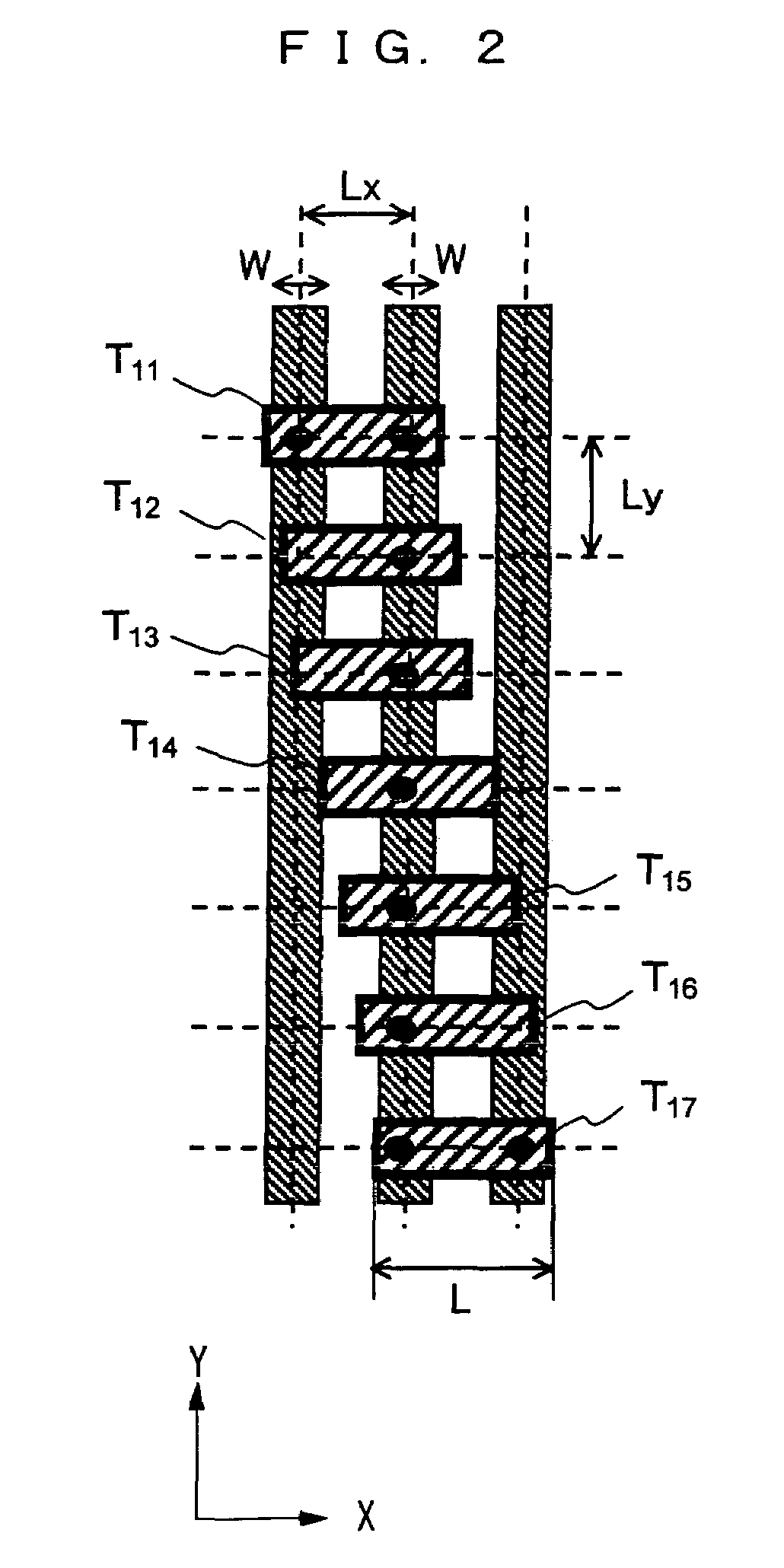Cell, standard cell, standard cell library, a placement method using standard cell, and a semiconductor integrated circuit
a technology of cell and cell library, applied in the direction of solid-state devices, instruments, computer aided design, etc., can solve the problems of deteriorating precision in the finished dimension of the gate electrode ultimately obtained, inability to apply the automatic placement in the foregoing manner, and reducing the cell area and chip area
- Summary
- Abstract
- Description
- Claims
- Application Information
AI Technical Summary
Benefits of technology
Problems solved by technology
Method used
Image
Examples
embodiment 1
[0078]FIG. 1 is a layout of standard cells according to an embodiment 1 of the present invention. A direction along a power-supply wiring S of the standard cell is referred to as X direction, while a direction vertical to the power-supply wiring S is referred to as Y direction. The power-supply wiring S is merely an example, and is not necessarily allocated as shown.
[0079]Referring to reference symbols in FIG. 1, x1-x13 denote routing grids used in automatic placement & routing and provided in the X direction, y1-y8 denote routing grids provided in the Y direction, C1, C2 and C3 denote standard cells, O1, O2 and O3 are respectively origins of C1, C2 and C3, T denotes a terminal capable of transmitting an input signal or an output signal of a standard cell Ci (i=1, 2, . . . ), and G denotes a gate electrode.
[0080]An automatic placement & routing tool is an automatic design tool for determining the location of cells and blocks and routing path among their terminals. The automatic desi...
embodiment 2
[0091]FIG. 5 is a design flow chart of an automatic placement & routing method using a standard cell according to an embodiment 2 of the present invention.
[0092]An automatic placement & routing apparatus for implementing the automatic placement& routing method comprises a connection information inputting device for acquiring a connection information of a logic circuit from outside, a design constraint inputting device for acquiring a design constraint of the logic circuit from outside, a layout information inputting device for acquiring a layout information of the standard cell from outside, a tentative placing device for tentatively placing respective cells based on the acquired connection information, and a relocating device for relocating the cells tentatively placed so as to reduce an area. The automatic placement & routing apparatus thus constituted places and routes the logic circuit including a plurality of standard cells.
[0093]First, the circuit connection information of the...
embodiment 3
[0100]FIG. 7 is a design flow chart of an automatic placement & routing method using a standard cell according to an embodiment 3 of the present invention.
[0101]An automatic placement & routing apparatus for implementing the automatic placement & routing method comprises a connection information inputting device for acquiring a connection information of a logic circuit from outside, a design constraint inputting device for acquiring a design constraint of the logic circuit from outside, a layout information inputting device for acquiring a layout information of the standard cell from outside, a placing device for placing cells based on the acquired connection information, a tentative routing processing device for providing a tentative routing for connecting terminals of the respective cells, a terminal shape processing device. for shaping a terminal, and an actual routing processing device.
[0102]First, the circuit connection information of the logic circuit for connecting a pluralit...
PUM
 Login to View More
Login to View More Abstract
Description
Claims
Application Information
 Login to View More
Login to View More - R&D
- Intellectual Property
- Life Sciences
- Materials
- Tech Scout
- Unparalleled Data Quality
- Higher Quality Content
- 60% Fewer Hallucinations
Browse by: Latest US Patents, China's latest patents, Technical Efficacy Thesaurus, Application Domain, Technology Topic, Popular Technical Reports.
© 2025 PatSnap. All rights reserved.Legal|Privacy policy|Modern Slavery Act Transparency Statement|Sitemap|About US| Contact US: help@patsnap.com



